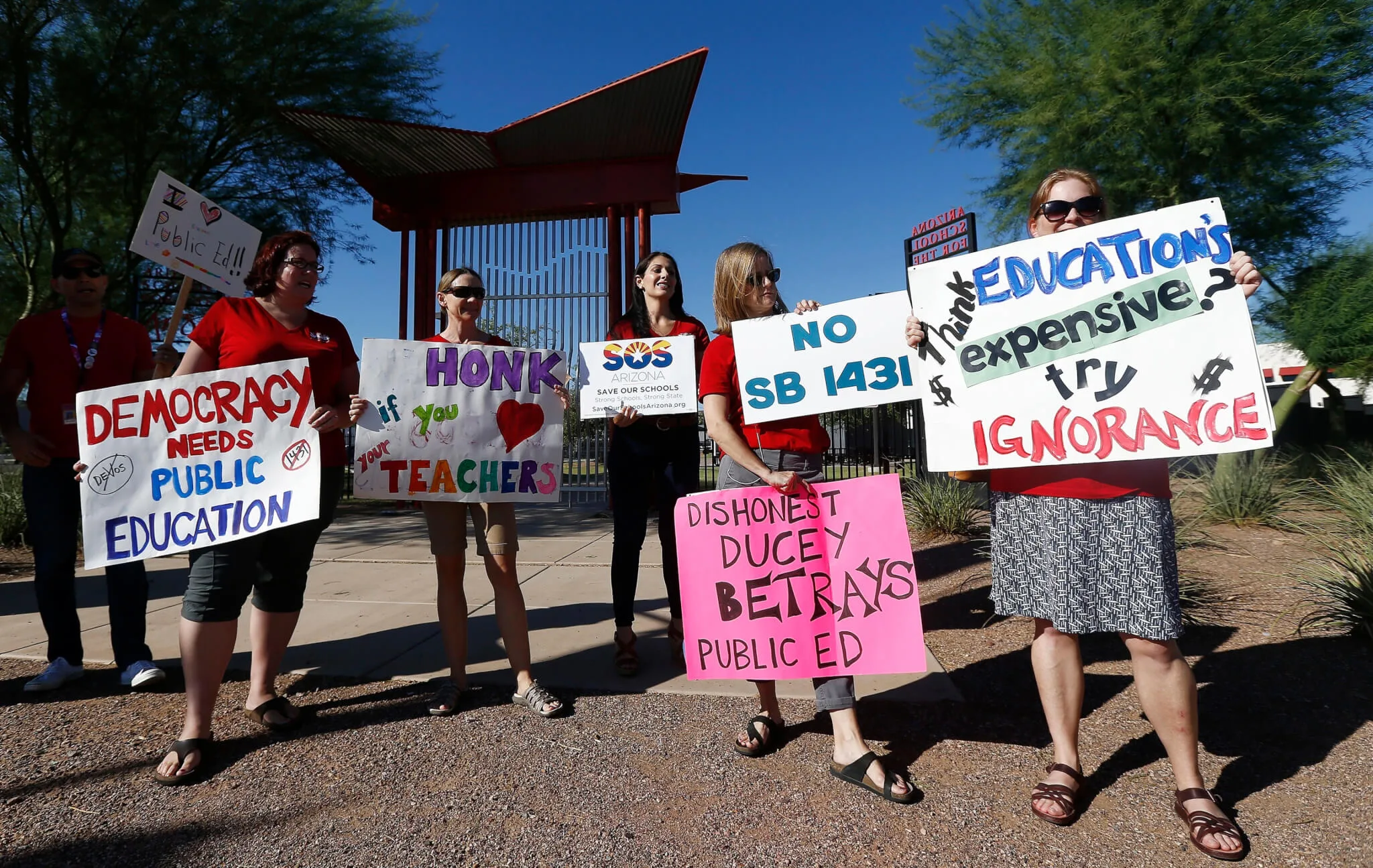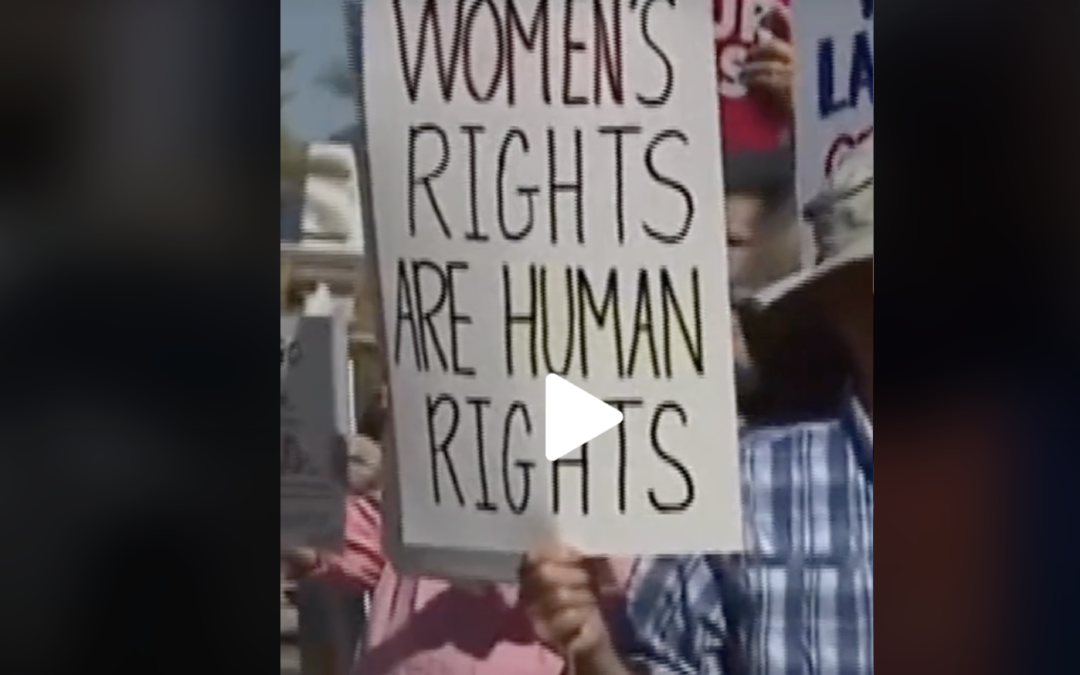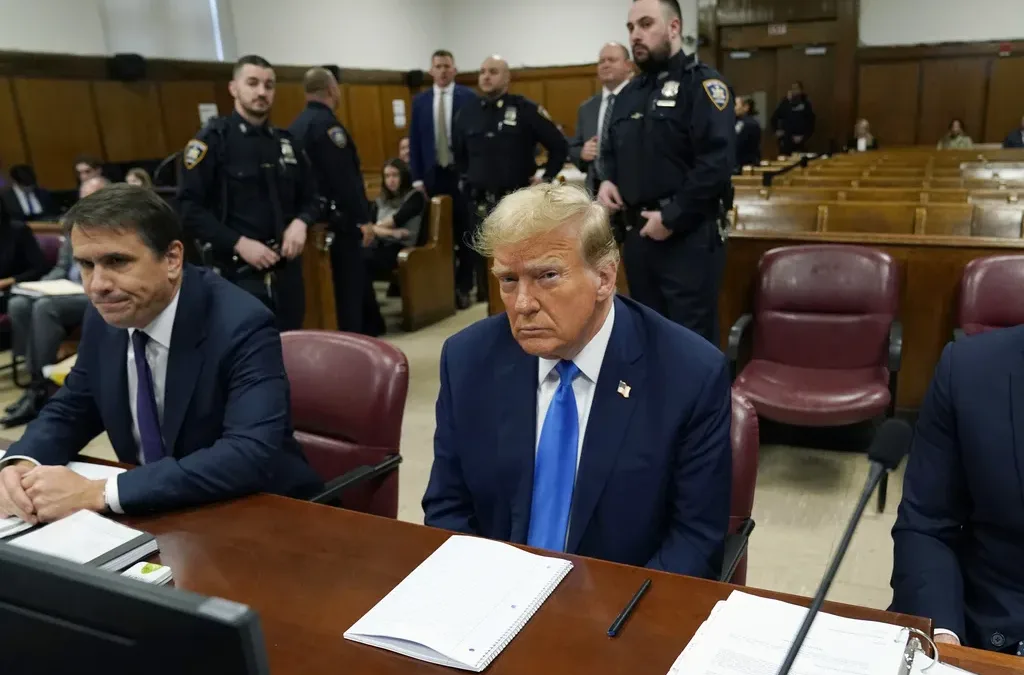
Members of Save Our Schools Arizona protest at the Arizona School for the Arts as Arizona Gov. Doug Ducey tours the school in Phoenix on Aug. 24, 2017. (AP Photo/Ross D. Franklin, File)
If every student who has applied so far uses their voucher, the new law is poised to move over $76.3 million from public schools to private.
In one swift stroke of his pen and a giant victory for school choice advocates, Gov. Doug Ducey in July signed a school voucher bill that further expanded the concept of school choice in Arizona.
Known as HB 2853, the new law allows any of the state’s 1.1 million students to pay for private schools using tax dollars set aside for the state education budget. According to advocates of the program, the bill allows parents to have greater control in deciding what schools they believe will best suit their children’s needs.
Nationwide, the debate on school vouchers has always been deeply contested, and this has been the case in Arizona since the tail end of the 1990s.
Ever-Expanding Eligibility
But what are school vouchers, and what types are available to eligible Arizona students in the K-12 system?
School vouchers are a government-funded program that pays tuition, fees, and other educational expenses for an eligible student to either attend private school or be homeschooled. Some of these educational expenses can include things like outside tutoring, uniforms, school supplies, and college entrance exams.
RELATED: Legislators Renew Call to Lift Decades-Old Cap on Education Spending
Arizona has two types of school voucher program categories: Student Tuition Organizations and Empowerment Scholarship Accounts.
Arizona’s first voucher program was an STO launched in 1998. The original intention of this initiative was to give students the option to attend any private school in the state.
Empowerment Scholarship Accounts came about a decade later, in 2011. It was originally meant as an option to provide students with disabilities access to schools with programs tailored to better meet their needs, but eligibility has now expanded to all K-12 students in the state.
Privatizing Public Services
Steve Smith, a former state senator who now serves as the director of the Arizona Federation for Children—a school choice advocacy group funded by former US Education Secretary Betsy DeVos—has been a vocal supporter of school choice in Arizona. Smith described the bill’s most recent passage as a step in the right direction that allows all kids in Arizona to get the education that they feel is best for them and their families.
“You and I and everybody else should be able to agree that no two kids learn the same,” Smith told The Copper Courier. “Every kid is different. Every kid learns different.”
On the other end of the debate are parents, educators, and public school advocates who have mobilized once again to repeal the newest expansion of the ESA program.
RELATED: No, Undergraduates in Arizona Cannot Teach Without a College Degree
Beth Lewis, co-founder of Save Our Schools Arizona, a nonprofit, grassroots organization in support of public schools, has been to the state Capitol countless times to advocate for public education. Lewis has served as a public school teacher for 12 years and said that she sees the impact it has on students when schools are properly funded with adequate resources.
Vouchers take away those resources, Lewis said, and divert them to private schools, which are run like a “business,” with no checks and balances or accountability measures in place to ensure that the money is being used for what is said it is being used for.
“They really think that kids should just be on vouchers—every single kid—and that we should have a private education system,” Lewis said. And so what that means is there’s a lot of opportunity for creating a system of haves and have-nots.”
Structural Issues Resulting From Systemic Racism
But Smith criticized the public school model, which he described as having a “one size fits all” mantra, and that it was “unfair” that students were forced to go to schools that did not fit their individual needs.
“The way education usually works around the country is you type in your address, it spits out a school that’s closest to you,” he said. “And that’s the one that you go to, good, bad or indifferent. If that school’s been in the toilet for decades, sucks for you. If that’s a good school, I guess you got lucky. Well, we’re not interested in the kids throwing away their futures because they just happen to win the zip code lottery, and it’s not fair.”
RELATED: Explained: How Latest School Voucher Expansion Caters to Wealthy at Students’ Expense
However, Smith’s comment fails to take into account Phoenix’s history of redlining and the fact that communities of color were not allowed to live in certain neighborhoods in the city.
As shown on the Mapping Inequality: Redlining In a New Deal America website, one of the areas in Phoenix where communities of color were situated was described as “hazardous,” and the federal government advised against providing home loans to the people.
In another description by lenders, they said “very ragged, occupied by Mexicans, Negroes and the low class of white people. There is no sale for property herein.” Because of the lack of investment in these areas, there were inadequate taxes available to fund schools.
Vouchers Mainly Used by White, Wealthy Families
There are currently almost 450 private schools operating in Arizona that serve over 66,000 students. The average cost of private schools in Arizona sits at $12,650, and according to Private School Review, Arizona private schools are composed of 39% racial minorities.
“These vouchers predominantly benefit kids who are wealthy in the suburbs, mostly white, and are already attending private school or have already chosen homeschooling,” said Lewis.
For Lewis and other ardent opponents to school vouchers, the main harm caused by voucher programs to schools and communities is the tax dollars diverted from public schools in order to fund them.
RELATED: It’s Not Just Today—Arizona Schools Have Had Funding Issues for Decades
But for Smith and other school voucher advocates, the issue with Arizona public schools is deeper than just the problem of funding, and pointed to several other school districts throughout the country including Washington, DC, and New York, that spend tens of thousands of dollars per pupil, but, according to Smith, are the worst districts in the country.
“So throwing money at a problem, number one, is not the solution. It’s how you spend the money. How much of that is actually going to the teacher? What kind of teacher retention do you have? There’s a whole lot that gets baked into how you spend the money. So number one, money on its own is not the issue, it’s how it’s spent,” Smith said.
However, according to an analysis by WalletHub published earlier this summer, New York’s public school systems are ranked at No. 17, putting it in the top 20. Additionally, the state spends almost $25,000 per pupil. Washington DC comes in ranked at No. 30 and spends $22,800 per pupil. WalletHub came to these rankings by evaluating reading and math scores, average ACT and SAT scores, graduation rates, teacher-student ratio, and several other metrics.
Public Funds With Little Oversight
The Arizona Center for Economic Progress also pointed out several areas where lack of oversight could be a potential issue. There is little to no information on students who use the ESA program including demographic information, performance measures, information about the school, and how these funds are actually being used.
There is currently no accountability program or oversight that private schools or other non-traditional forms of school have to abide by.
Empowerment Scholarship Accounts were designed solely to assist students who were living with disabilities. Within its first year, 114 students received over $1.6 million state dollars.
By 2018, the Arizona Republic revealed that Arizona parents made several nonschool purchases with a government-issued debit card. According to an Auditor General report, some parents used these debit cards to purchase cosmetic products, buy sports clothes, and pay for computer technical support providers. In total, the audit found that over $700,000 was misspent.
Now, with its most recent expansion, ESAs cover costs like tuition, textbook costs, uniforms, and other needs for students who are not attending private schools.
Vouchers Don’t Save Failing Schools—They Abandon Them
After its initial passage, the ESA program was expanded once more in 2012 to include students in foster care, children of members of the military, and children who were attending “D” or “F” rated schools. With its most recent expansion, passed by Arizona’s Republican-led legislature and signed into law by Ducey, all students are eligible to use ESA vouchers to subsidize the costs of private education with public funds.
Smith claimed that Arizona spends around $13,000 per pupil in the public education system, and compared it to the average voucher value of around $7,000. However, according to the Education Data Initiative, Arizona actually ranks on the low end in public school student expenditures—the state spends around $8,700 per pupil, ranking in 48th place.
Overall, according to Smith, the ESA bill is not as restrictive as opponents make it out to be. He says it simply gives more parents power and control over their child’s education.
“If [children] are our future, if they’re truly our future, why would you want to stifle them in a failing school? Why would you want to stifle them in an environment that ain’t working for them? Why wouldn’t you want them to have the chance or the choice to go somewhere else? And this bill doesn’t make anybody go anywhere. It just says, if you want, you can go here.”
But Lewis balked at the argument and said that proponents of school vouchers use the pretext that schools are “failing” in order to justify vouchers. Politicians also use school ratings in order to justify vouchers, something that Lewis said doesn’t give the full picture of schools and their students and is determined more so by socioeconomic standing than anything else.
“Every single time you see a ‘D’ or an ‘F’ [rated school], and I will show you the poorest kids in the state. Most of our ‘D’ and ‘F’ rated schools are in central Phoenix and the Navajo Nation,” Lewis said. “So this whole, ‘our schools are failing our kids is a manufactured thing that really honestly has been orchestrated to usher in things like vouchers. You see it on Fox News. You see it from Ducey. You see it from the Legislature, and it’s like any other lie. If you repeat it enough, they think people will buy it.”
This talking point is further questionable because even students who are coming from A-rated schools are also able to use the voucher program. This is thanks to the ever-expanding guidelines on who can use vouchers, as determined by the Republican-led state Legislature.
Pushing Back Against An Unpopular Program
While the initial passage of the ESA and its subsequent expansion was successful, the actual fight came in 2017, when the Arizona Legislature first attempted to expand the program into a universal school voucher system that would have granted eligibility to over 1.6 million students in the state.
Save Our Schools Arizona mobilized thousands of teachers, parents, and other public school advocates to refer the proposition to the ballot for the following year. In 2018, the proposed voucher expansion was overwhelmingly opposed, with 65% of voters voting “no” on Proposition 305, effectively repealing the bill in its entirety.
The Legislature attempted to pass multiple expansions of the ESA program in the years that followed but failed. Earlier this summer, Republicans in the Legislature finally succeeded with the passage of HB 2853 along party lines, much to the chagrin of public school advocates and supporters.
According to an ESA quarterly report submitted to the Arizona Department of Education back in May, over 11,700 Arizona K-12 students were eligible for the ESA program at the time. The average annual amount that students receive was just over $15,000.
However, since the passage of HB 2835, the Arizona Department of Education has received 10,906 ESA applications. If every applicant uses their voucher, the new law is poised to move over $76.3 million from public schools to private.
What’s Next for HB 2853?
Save Our Schools Arizona plans to do what they did in 2017—let the voters decide. The organization is in the process of collecting enough signatures to block the new law from going into effect until it can be voted on.
This is possible thanks to a provision of Arizona’s constitution that allows opponents of new laws to collect signatures of 5% of eligible voters and block it until the next general election. If Save Our Schools Arizona is able to gather the required number of eligible signatures by the end of September, the option to repeal the ESA voucher expansion will appear on the November 2024 ballot.
Looking for the latest Arizona news? Sign up for our FREE daily newsletter.
Politics

Trump says he’s pro-worker. His record says otherwise.
During his time on the campaign trail, Donald Trump has sought to refashion his record and image as being a pro-worker candidate—one that wants to...

VIDEO: Hundreds show up in Scottsdale to support reproductive rights
@coppercourier Days after the Arizona Supreme Court ruled to enforce a long-dormant law that bans nearly all abortions, hundreds took part in a...
Local News

US court rejects a request by tribes to block $10B energy transmission project in Arizona
In Arizona, work was halted briefly in November amid pleas by tribes to review environmental approvals for the San Pedro Valley. ALBUQUERQUE, N.M....

What to know about Trump’s legal issues
Over the past year, former president Donald Trump has become the center of not one, not two, not three, but four criminal investigations, at both...




